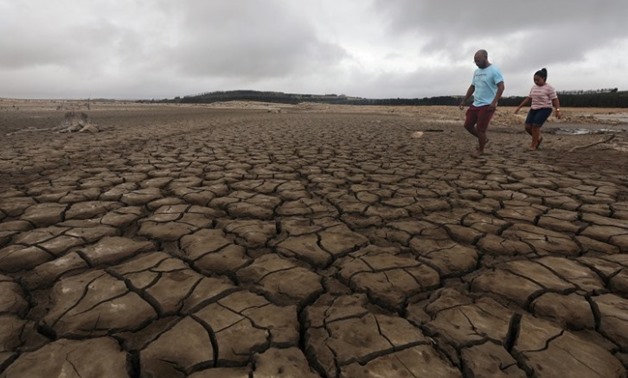
Zambia taps climate fund to battle worsening drought - Reuters
LILONGWE - 4 March 2018: Zambian farmers facing more extreme weather are set to get better early warning and weather information to help them cope, as part of a new grant from the Green Climate Fund.
In a funding round announced this week, the international climate fund approved $32 million toward a broader effort by the United Nations Development Programme (UNDP), the U.N. Food and Agriculture Organization (FAO) and the World Food Programme to help shore up food security and keep farmers from slipping into poverty.
The U.N. agencies had already raised $125 million toward the effort, which aims to help fight poverty among about 940,000 farmers hit by extreme weather in Zambia, according to Janet Rogan, a UNDP representative in the country.
The effort aims to help farmers plan for climate risks, make their farming more resilient and diversified and give them better access to markets, said Simon Pollock, a spokesman for the Green Climate Fund (GCF), in an email interview.
“In addition, this intervention is specifically designed to create economic opportunities for women,” Pollock told the Thomson Reuters Foundation.
The project targets 16 particularly climate-vulnerable provinces in the country, where worsening droughts and flooding have been a problem.
Zambia, like many of its southern African neighbours, is struggling with strengthening climate impacts in the face of already widespread poverty.
According to the 2016 UNDP Human Development Report, about 60 percent of the country’s people live below the poverty line, more than 40 percent of those in extreme poverty.
The report says 70 percent of Zambians rely on agriculture for a living, and agriculture, forestry and fishing contribute 24 percent of the country’s Gross Domestic Product.
Eric Chipeta, an energy and environmental analyst in Zambia for UNDP, said the effort would, for instance, provide Zambian farmers with insurance that issues automatic payouts when certain rainfall or temperature thresholds are passed, and crops are presumed dead or damaged.
“The initiative will go a long way to strengthen the capacity of farmers to plan for climate risks (and) provide the opportunity for weather index insurance even in times of poor rains,” he told the Thomson Reuters Foundation.
Zambia has seen increasingly unpredictable weather, including drought this year that hit at the time when maize – the country’s staple crop – began putting out tassels, Chipeta said. Drought at that point can cut harvests significantly, experts say.
In many areas of Zambia, “there is a high rate of poverty, meaning efforts to end hunger and poverty are at risk if we don’t take immediate action to adapt agricultural practices to changing climate conditions”, Chola Chabala, Zambia’s permanent secretary for National Development Planning, said in a press statement.
Chipeta said that the increasing frequency and intensity of extreme weather already has severely affected Zambian farmers.
The GCF-backed initiative will be rolled out with support from national institutions such as Zambia’s Ministry of Agriculture and the Zambia Meteorological Department, Chipeta said. (Reporting by Charles Mkoka ; editing by Laurie Goering

Comments
Leave a Comment